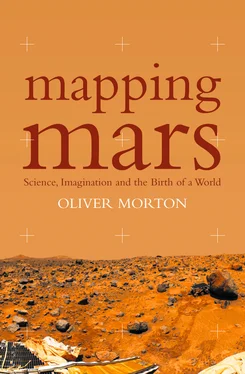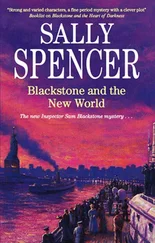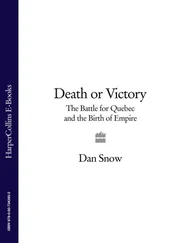Dawn may feel like an intervention by the sun, rising above a stationary earth; sunset reveals the truth of the earth’s turning, a slipping away into night. That turning defines two unique, unmoving points on the surface of the earth: the poles, the extremes of latitude. Add one more point – just one – and you have a co-ordinate system that can describe the whole world, a basis for all the maps and charts the sailors and pilots need, a way of deciding when days start and end. And that third point is right in front of you, the strongest of all Greenwich’s links to the rest of the earth. In the middle of the park is the old Royal Observatory, a little gathering of domes perched clubbily on a ridge. Within the observatory sits a massive metal construction called a transit circle. The line passing through the poles and through that transit circle is the earth’s prime meridian: 0 degrees, 0 minutes, 0 seconds. All earthly longitudes are measured with respect to that line through Greenwich Park.
The English have taken the Greenwich meridian as the starting point for longitudes since the observatory was founded in the seventeenth century. But it wasn’t until the late nineteenth century – at a time when its home in Greenwich was under the stewardship of Sir George Airy, Astronomer Royal, the man who had that great transit circle built – that the Greenwich meridian was formally adopted by the rest of the world. With worldwide navigation a commonplace, and with telecommunications making almost instantaneous contact between continents a possibility, there was a need for a single set of co-ordinates to define the world’s places and time zones. Over the years a variety of possible markers to define this prime meridian were suggested – islands, mountains, artefacts like the Great Pyramid or the Temple in Jerusalem. But a meridian defined by an observatory seemed best. In 1884, at a conference in Washington DC, and over spirited French opposition, Greenwich was chosen. Airy’s transit circle came to define the world.
Airy was, by all accounts, an uninspiring but meticulous man. He recorded his every thought and expenditure from the day he went up to Cambridge University to more or less the day he died, throwing no note away, delighting in doing his own double-entry bookkeeping. He applied a similar thoroughness to his stewardship over the Royal Greenwich Observatory, bringing to its workings little interest in theory or discovery but a profound concern for order, which meant that the production of tables for the Admiralty (the core of the observatory’s job) was accomplished with mechanical accuracy. He looked at the heavens and the earth with precision, not wonder, and though he had his fancies, they were fancies in a similar vein – ecstasies of exactitude such as calculating the date of the Roman invasion of Britain from Caesar’s account of the timing of the tides, or meticulously celebrating the geographical accuracy of Sir Walter Scott’s poem ‘The Lady of the Lake’. This was a man whose love of a world where everything was in its place would lead him to devote his own time to sticking labels saying ‘empty’ on empty boxes rather than disturb the smooth efficiency of the observatory by taking an underling from his allotted labours to do so for him. After more than forty-five years of such service Airy eventually retired 200 yards across the park to the White House on Crooms Hill, where he died a decade later.
It’s a little sad that the White House doesn’t carry a blue circular plaque to commemorate Airy’s part in the happiness brought to humanity by a single agreed-upon meridian, but surely there are monuments elsewhere. Maybe Ipswich has an Airy Street; he grew up there and remained fond of the place, arranging for his great transit circle to be made at an Ipswich workshop. There must be a bust of him in the Royal Astronomical Society. Or a portrait in some Cambridge common room. And even if there are none of these things, there is something far grander. Wherever else astronomers go when they die, those who have shown even the faintest interest in the place are welcomed on to the planet Mars, at least in name. By international agreement, craters on Mars are named after people who have studied the planet or evoked it in their creative work – which mostly makes Mars a mausoleum for astronomers, with a few science fiction writers thrown in for spice. In the decades since the craters of Mars were first discovered by space probes, hundreds of astronomers have been thus immortalised. But none of them has a crater more fitting than Airy’s.
‘I’ve never been to Mars, but I imagine it to be quite lovely.’
Cosmo Kramer, in Seinfeld
(‘The Pilot (I)’, written by Larry David)
Mars had an internationally agreed prime meridian before the earth did. In 1830 the German astronomers Wilhelm Beer and Johann von Mädler, famous now mostly for their maps of the moon, turned their telescope in Berlin’s Tiergarten to Mars. The planet had been observed before. Its polar caps were known, and so was its changeability; the face of Mars varies from minute to minute, due to the earth’s distorting atmosphere, and from season to season, due to quite different atmospheric effects on Mars itself. There are, though, some features that can be counted on to stick around from minute to minute and season to season, the most notable being the dark region now called Syrtis Major, then known as the Hourglass Sea. To calculate the length of the Martian day, Mädler (Beer owned the telescope – Mädler did most of the work) chose another, smaller dark region, precisely timing its reappearance night after night. He got a figure of 24 hours 37 minutes and 9.9 seconds, 12.76 seconds less than the currently accepted figure. That this length of time is so similar to the length of an earthly day is complete coincidence, one of three coincidental similarities between the earth and Mars. The second coincidence is that the obliquity of Mars – the angle that its axis of rotation makes with a notional line perpendicular to the plane of its orbit – is, at 25.2°, very similar to the obliquity of the earth. The third is that though Mars is considerably smaller than the earth – a little more than half its radius, a little more than a tenth its mass – its surface area, at roughly a third of the earth’s, is quite similar to that of the earth’s continents.
When Mädler came to compile his observations into a chart in 1840, mathematically transforming his sketches of the disc of Mars into a rectangular Mercator projection, he declined to name the features he recorded, but did single out the small dark region he had used to time the Martian day as the site of his prime meridian, centring his map on it. Future astronomers followed him in the matter of the meridian while eagerly making good his oversight in the matter of names. Father Angelo Secchi, a Jesuit at the Vatican observatory, turned the light and dark patches into continents and seas, respectively, as astronomers had done for the moon, and gave the resulting geographic features the names of famous explorers – save for the Hourglass Sea, which he renamed the ‘Atlantic Canale’, seeing it as a division between Mars’s old world and its new. In 1867 Richard Proctor, an Englishman who wrote popular astronomy books, produced a nomenclature based on astronomers, rather than explorers, and gave astronomers associated with Mars pride of place. His map has a Mädler Land and a Beer Sea, along with a Secchi Continent. Observations made by the Astronomer Royal in the 1840s – he was interested in making more precise measurements of the planet’s diameter – were commemorated by the Airy Sea. Pride of place went to the Rev. William Rutter Dawes, a Mars observer of ferociously keen eyesight, perceiving, for example, that the dark patch Mädler had used to mark the prime meridian had two prongs. (Dawes’s far-field acuity was allegedly compensated by a visual deficit closer to home; it is said he could pass his wife in the street without recognising her.) So great was Dawes’s influence on Proctor – or so small was the number of astronomers associated with Mars – that his name was given not just to the biggest ocean but also to a Continent, a Sea, a Strait, an Isle and, marking the meridian, his very own Forked Bay.
Читать дальше












